Key takeaways:
- Child safeguarding principles prioritize children’s well-being and emphasize the importance of listening to their voices.
- Challenges arise from cultural differences, varying definitions of “safety,” and biases that can hinder effective safeguarding practices.
- Building trust with diverse communities requires genuine engagement, consistency, and celebration of cultural differences.
- Adaptability, empathetic listening, and collaboration are essential for addressing the needs of diverse populations in safeguarding efforts.

Understanding child safeguarding principles
Child safeguarding principles revolve around prioritizing the well-being and protection of children. I vividly remember a day during my early career when I witnessed a child’s immediate needs being overlooked due to procedural gaps. It struck me how crucial it is to not only establish guidelines but to create an environment where every child feels safe to express their concerns.
One essential principle is that children have the right to be heard. I often think about how, as adults, we sometimes underestimate the wisdom children hold. Reflecting on instances where children were encouraged to share their feelings, I felt their voices transformed an entire environment, making it more responsive and supportive. Isn’t it time we actively listen to what they have to say?
Moreover, collaboration among various stakeholders—families, educators, and social services—is vital. In my experience, I’ve seen successful outcomes when communities come together, sharing their diverse perspectives. It’s intriguing; how can one perspective truly capture the complexities of a child’s world? By fostering a holistic approach to safeguarding, we can better address the multifaceted nature of each child’s experience.
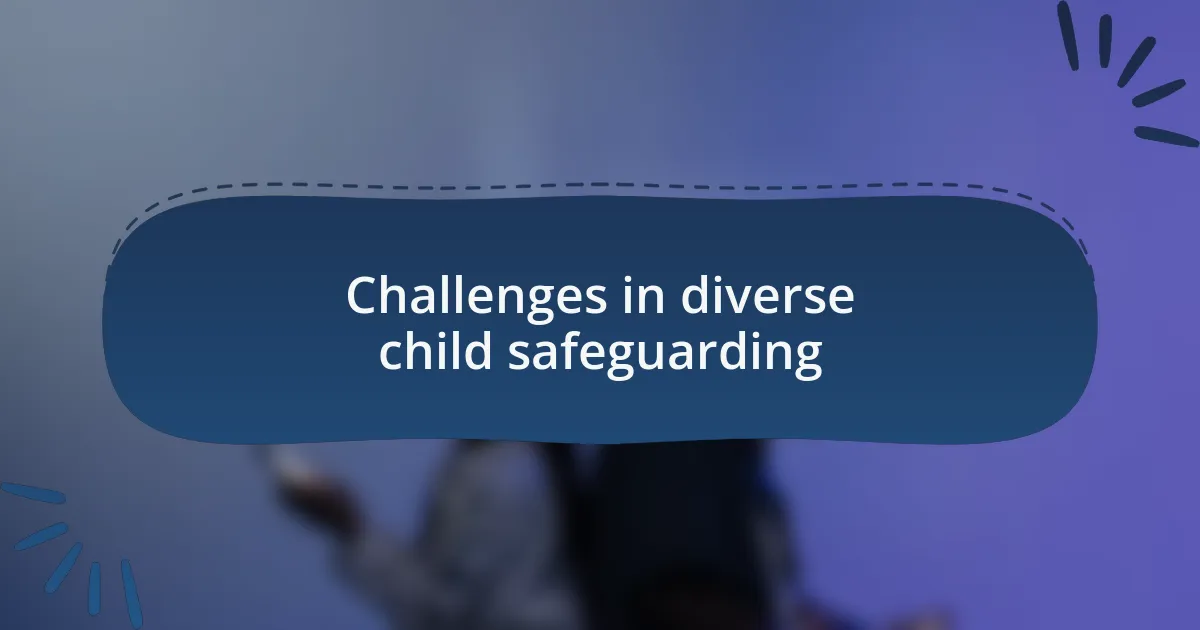
Challenges in diverse child safeguarding
In my journey through child safeguarding, I’ve encountered numerous challenges when working with diverse populations. One experience that stays with me involved a family from a different cultural background who struggled to navigate our system. Their misunderstandings regarding safety protocols highlighted the barriers that language and cultural differences can create. How can we expect to protect children if we don’t take the time to comprehend their unique backgrounds?
Another major challenge I see is the varying definitions of “safety” that exist across cultures. For some families, the focus might be on community ties and relational networks, while others prioritize individual rights and autonomy. During a workshop, I remember discussing this discrepancy with participants, and it became evident how essential it is to unpack these definitions collaboratively. How can we establish effective safeguarding practices if we fail to appreciate these diverse perspectives?
Moreover, bias—whether conscious or unconscious—poses significant risks in safeguarding children. I recall a situation where I misjudged a child’s behavior based on preconceived notions linked to their ethnic background. This experience was a stark reminder of how biases can distort our perceptions and hinder our ability to act in the child’s best interest. I often reflect on how much more effective we could be by actively recognizing and addressing our biases. Don’t we owe it to every child to ensure they receive the same level of care and attention, regardless of their background?
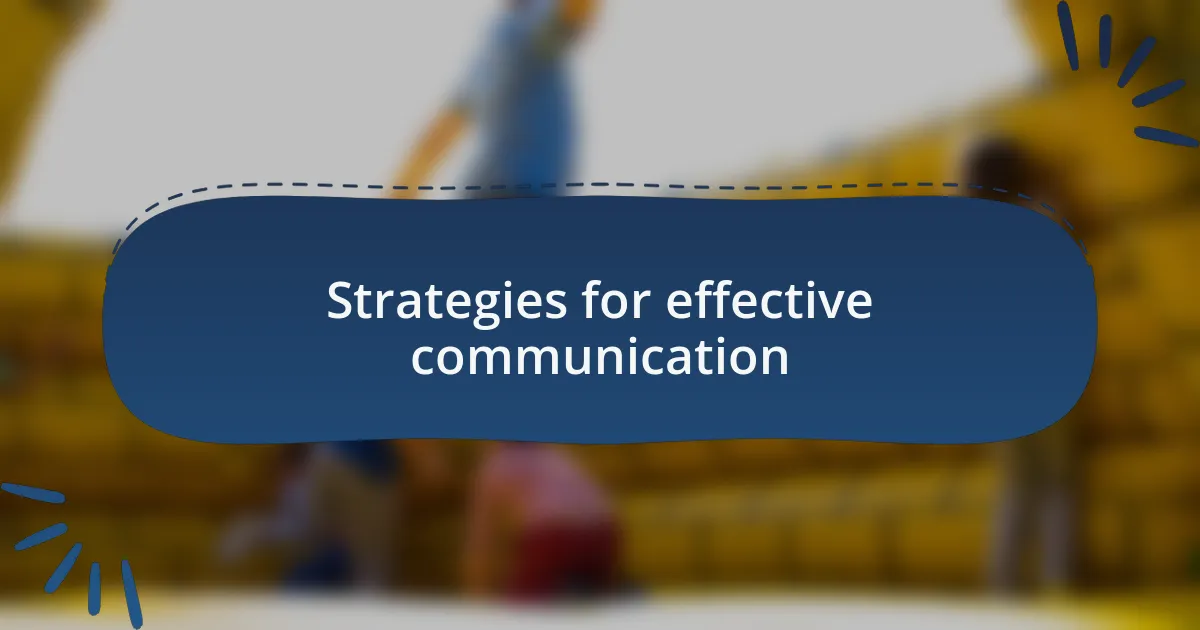
Strategies for effective communication
Effective communication is the cornerstone of working with diverse populations in child safeguarding. I remember a case where I initiated a family meeting with interpreters present. This small adjustment not only helped bridge the communication gap but also made the family feel valued, fostering a sense of trust. How often do we underestimate the power of simply speaking in someone’s preferred language?
Listening actively goes hand in hand with communication strategies. There have been instances when I’ve been surprised by the insights shared by parents when I took the time to pause and really listen. My patience in those moments transformed the dialogue from a transactional exchange to a rich conversation about their child’s needs. Isn’t it amazing how listening can change the way we engage with families?
Moreover, utilizing visual aids can be incredibly helpful. In one workshop, I introduced images and diagrams to explain safeguarding concepts, and the shift in understanding was immediate. Seeing those visual representations enabled participants from different backgrounds to engage more meaningfully. Why not harness all available tools to make our message clearer and more inclusive?
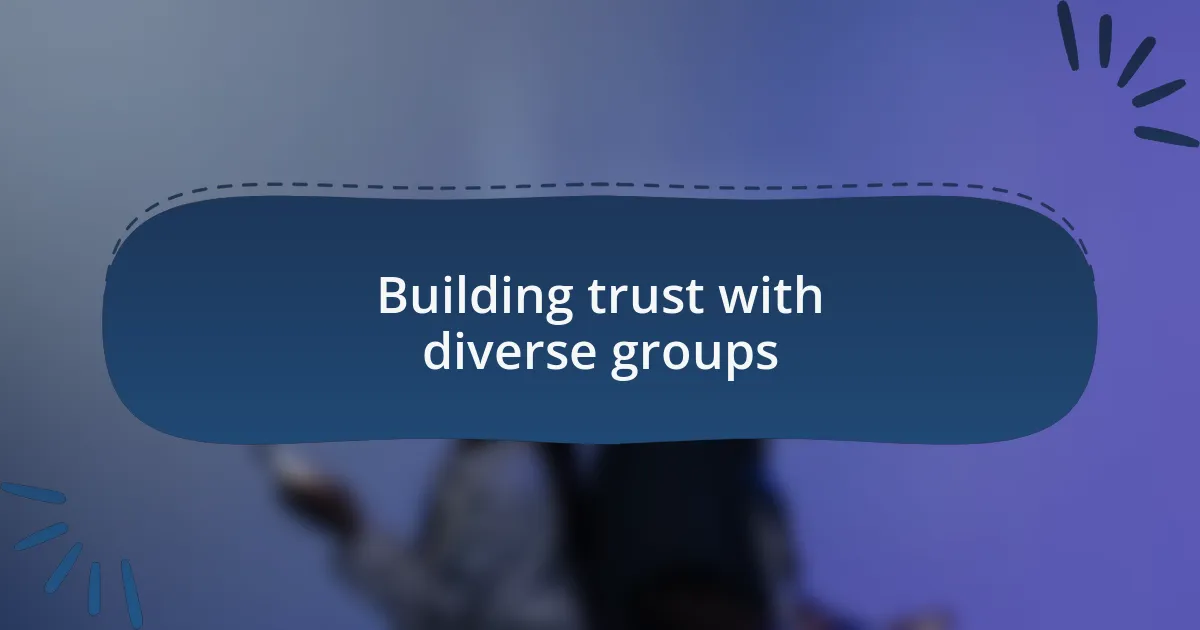
Building trust with diverse groups
Building trust within diverse groups requires a genuine commitment to understanding their unique experiences and perspectives. I recall a situation where I organized community forums specifically tailored for different cultural groups. The healing effect was palpable as parents shared their stories in a safe space, revealing their deep-seated concerns and hopes for their children. Wasn’t it incredible to witness how vulnerability breeds connection?
Consistency in our actions is equally essential. I once worked with a family from a marginalized background and made it a point to show up reliably for our scheduled meetings. Each time I arrived, I could see their apprehension fade and trust grow, underscoring the idea that reliability speaks volumes about our intentions. Isn’t it fascinating how sometimes our presence can convey more than words alone?
Moreover, recognizing and celebrating cultural differences fosters a sense of belonging that is crucial in building trust. During one initiative, we showcased cultural festivals, allowing families to share their heritage through food and storytelling. The joy and pride evident on their faces highlighted just how important it is to honor their identities. How often do we miss opportunities to create connections by simply inviting people to share who they are?
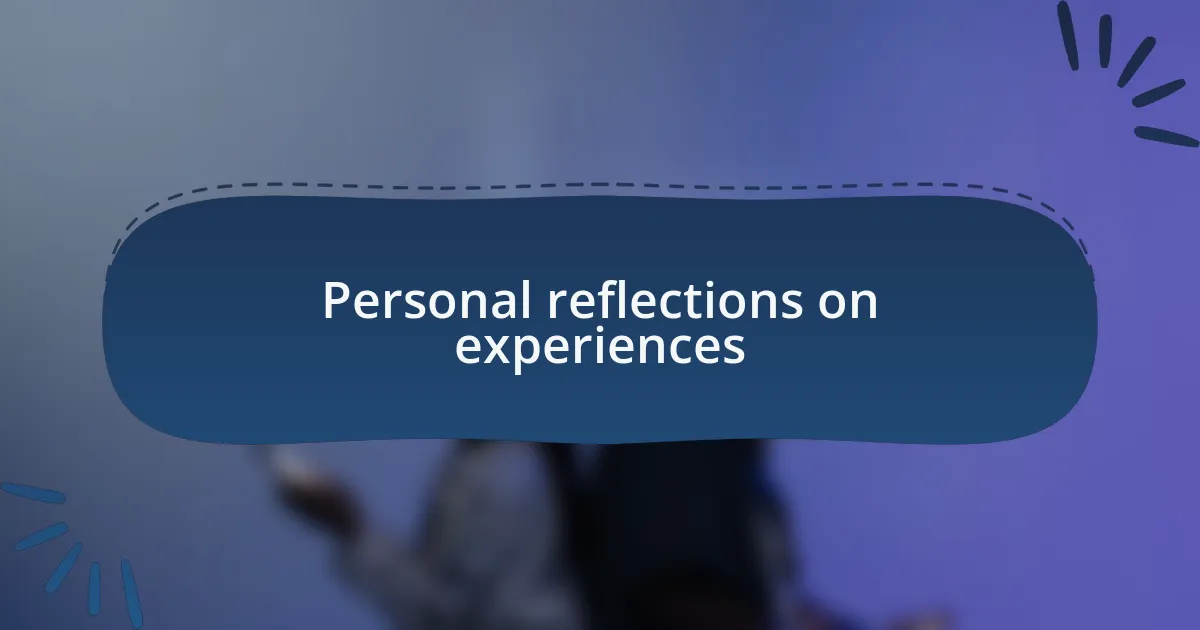
Personal reflections on experiences
Reflecting on my experiences, I remember working with a group of single parents from various backgrounds. One evening, I facilitated a workshop aimed at addressing their challenges. As I listened to their stories, I was profoundly moved by their resilience. It struck me how each person carried their own unique burdens, yet they were all seeking the same support and understanding. How often do we overlook the strength hidden in vulnerability?
In another instance, I partnered with a local community center to reach out to immigrant families. We organized a series of informal meet-and-greets, where parents could bring their children and share their experiences. I was amazed when one mother approached me hesitantly at first but then opened up about her journey and aspirations for her children. Seeing her confidence blossom as she connected with others reminded me of the transformative power of a supportive environment. Isn’t it amazing how shared experiences can empower individuals to find their voice?
Lastly, I had the opportunity to engage with a group of youths from diverse cultural backgrounds during a mentoring program. Initially, there was a palpable sense of distrust among them, but as we spent time discussing their dreams and fears, walls began to crumble. I still remember the moment one young man shared his struggles with cultural identity, and how it resonated with many others in the room. It left me pondering: how can we better create spaces where everyone feels safe to express their true selves?
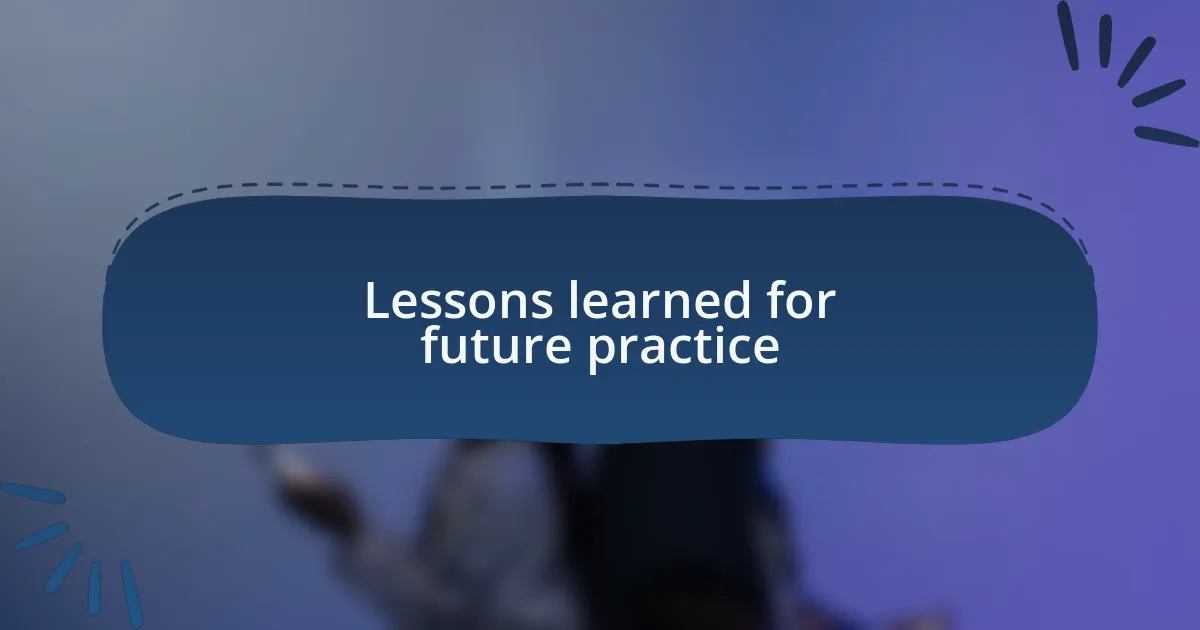
Lessons learned for future practice
In my journey, I’ve come to realize the importance of adaptability when working with diverse populations. One time, during a community event, I witnessed a language barrier that hindered meaningful dialogue. Immediately, we pivoted to using visual aids and simplified language, which transformed the dynamic. It taught me that being flexible in our approaches can bridge gaps and foster understanding.
Another lesson I hold dear is the value of listening with empathy. I recall a situation where a young participant expressed frustration about feeling marginalized in his school. Rather than providing immediate solutions, I chose to sit with him and truly hear his story. This experience reinforced my belief that giving space for others to share their experiences often leads to deeper connections and insights. How often do we rush to fix problems instead of letting individuals be heard?
Finally, collaboration emerged as a key takeaway from my work. During a project aimed at engaging youth, I brought together local stakeholders, such as schools and social services. By pooling resources and perspectives, we created a more comprehensive support system. It reminded me that when diverse voices unite, we can cultivate innovative strategies for safeguarding and supporting our communities. Isn’t it fascinating how collaboration can redefine the narrative?